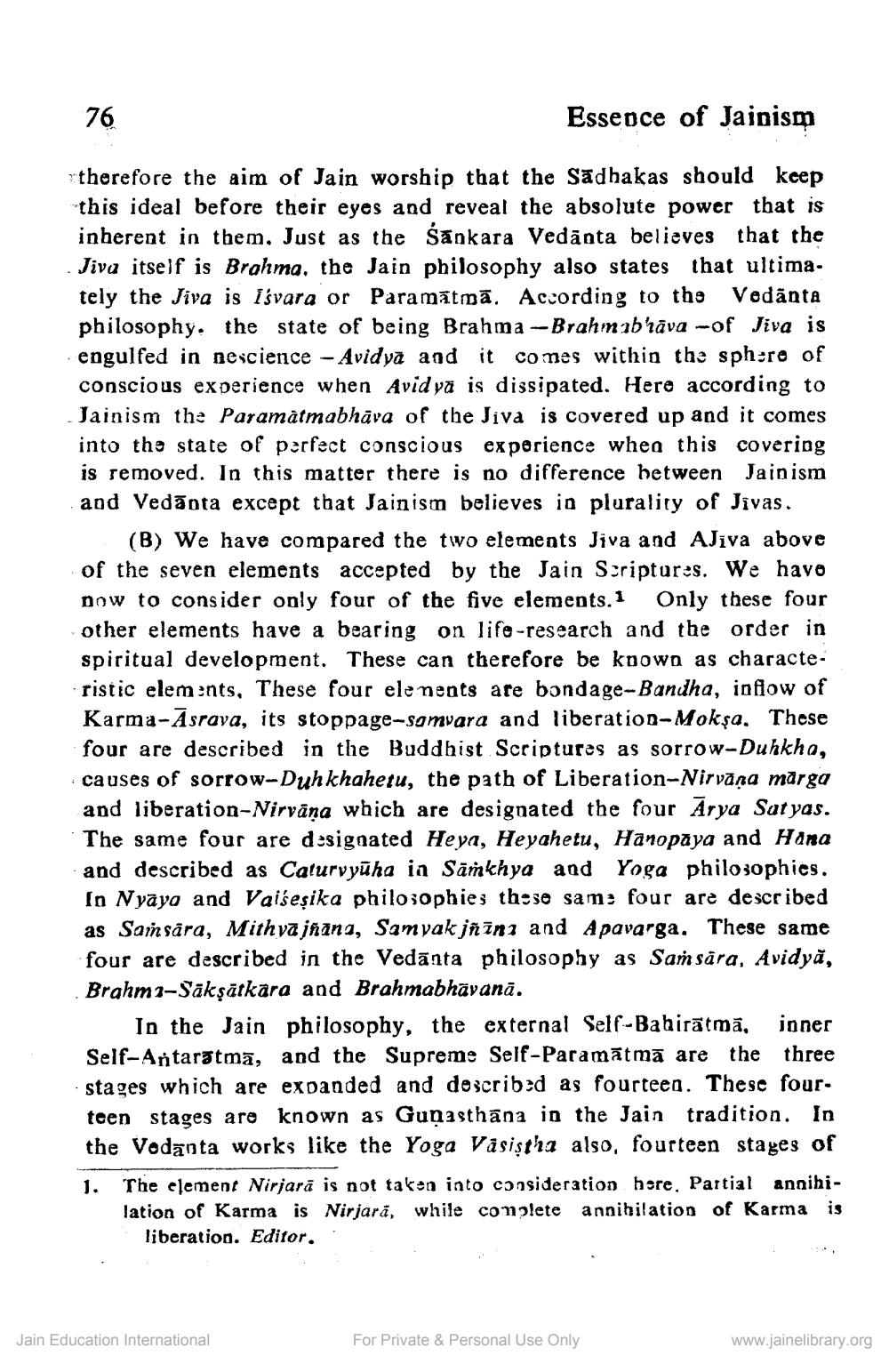________________
76
Essence of Jainism
therefore the aim of Jain worship that the sādhakas should keep this ideal before their eyes and reveal the absolute power that is inherent in them. Just as the Sankara Vedānta believes that the Jiva itself is Brahma, the Jain philosophy also states that ultima. tely the Jiva is I'śvara or Paramātmā. According to the Vedānta philosophy. the state of being Brahma --Brahm abhāva -of Jiva is engulfed in nescience - Avidya and it comes within the sphere of conscious experience when Avid ya is dissipated. Here according to Jainism the Paramātmabhāva of the Jiva is covered up and it comes into the state of perfect conscious experience when this covering is removed. In this matter there is no difference between Jainism and Vedānta except that Jainism believes in plurality of Jivas.
(B) We have compared the two elements Jiva and Aliva above of the seven elements accepted by the Jain Scriptures. We havo now to consider only four of the five elements. Only these four other elements have a bearing on life-research and the order in spiritual development. These can therefore be known as characte
ic elements. These four elements are bondage-Bandha, inflow of Karma-Asrava, its stoppage-samvara and liberation-Mokşa. These four are described in the Buddhist Scriptures as sorrow-Duhkha, causes of sorrow-Duh khahetu, the path of Liberation-Nirvana marga and liberation-Nirvāṇa which are designated the four Arya Satyas. The same four are designated Heya, Heyahetu, Hanopaya and Hana and described as Calurvyūha ia Sankhya and Yoga philosophics. In Nyāya and Vaiseșika philosophies those sam: four are described as Samsára, Mithya jñana, Samyak jñīni and Apavarga. These same four are described in the Vedānta philosophy as Samsara, Avidyā, Brahma-Sākṣārkara and Brahmabhāvanā.
In the Jain philosophy, the external Self-Bahirātmā, inner Self-Artarytmā, and the Supreme Self-Paramātmā are the three stages which are expanded and described as fourteen. These four. teen stages are known as Guṇasthāna in the Jain tradition. In the Vedanta works like the Yoga Väsiştha also, fourteen stages of 1. The element Nirjarā is not taken into cɔosideration here, Partial annihilation of Karma is Nirjară, while complete annihilation of Karma is
liberation. Editor.
Jain Education International
For Private & Personal Use Only
www.jainelibrary.org




